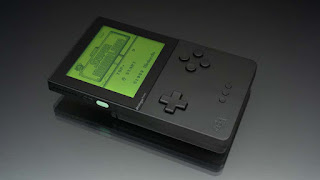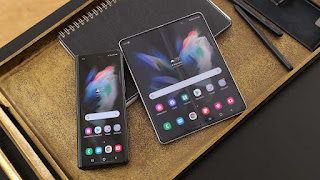Tech Gadgets that Topped 2021
A year after a global pandemic sent us all reeling, gadget companies are scrambling to meet the demand created by our drastic shift in work and life schedules. Due to a continuing chip scarcity, products announced this year have been delayed, shipping weeks or even months late. Some products that were supposed to be released in 2021 have been pushed to 2022.
Despite the upheaval, there were dozens of new fantastic technologies announced this year. These are the ones we tested and liked, the ones that helped us get through the year and will help us get through a rocky start to 2022.
Apple’s MacBook Pro With M1 Max
The M1 chip in the MacBook Air and Pro impressed us to the point that we wondered how Apple could raise the performance ceiling any higher. Then, this year, Apple released the improved M1 Pro and M1 Max Chipsets in the 14-inch and 16-inch MacBook Pros. It would be an understatement to say that the new Pros are impressive. However, that isn't the whole story. Sure, the MacBook Pro is more powerful than almost any laptop on the market today, but it's also a lot more. The 14-inch model is a huge upgrade over its 13-inch predecessor, even if you (somehow) neglect the new Chipsets.
Google Pixel 6/6 Pro
Google has been creating phones for a long time, but it didn't feel like the Pixel lineup arrived until 2021. The Pixel 6 and Pixel 6 Pro feel like a fresh start after some dubious releases (squints at Pixel 5) from a company that once seemed poised to challenge Apple. Google has made it tough for Android customers to justify buying anything else by updating the cameras, employing premium components, and keeping the pricing lower than anyone expected ($599 for the Pixel 6!).
Analogue Pocket
The Analogue Pocket was first revealed in October of 2019, but owing to the ongoing pandemic, it took another year (and then some) before it began shipping to those who preordered the console in August of 2020. However, the wait was well worth it.
China continues to export a continuous stream of handheld consoles. While these devices can play games from a variety of retro systems, such as the NES, Genesis, and SNES, they rely on software emulation, which is prone to performance issues and errors, resulting in less-than-ideal gameplay. With a proprietary Field-Programmable Gate Array chip engineered to perform exactly like the Game Boy, Game Boy Color, Game Boy Advance, Sega Game Gear, and several other classic handhelds, the Analogue Pocket takes a whole different approach.
As a result, the handheld analogue pocket can play games from any of those systems without skipping frames, graphical flaws, or audio sync problems. The FPGA in the Analogue Pocket is combined with a stunning 3.5-inch LCD display that has more pixels per inch than the iPhone 13 Pro. The screen can not only make classic handheld games seem fantastic, but it can also exactly recreate how these games appeared on their original devices within the constraints of display technology in the 1980s and 1990s. It's the ideal Game Boy, but getting your hands on one will be difficult.
Beats Fit Pro
Beats, which is owned by Apple, has long developed excellent headphones and earbuds that work well with a number of gadgets, but with the $200 Beats Fit Pro this year, the company has really cracked it.
Previous Beats headphones had a number of flaws, and in recent years, this has been due to Apple saving its greatest technology (such as the H1 chip, which allows for seamless interaction with Apple devices) for its own products. The Beats Fit Pro, on the other hand, include all of the features of Apple's AirPods Pro, but for $50 less. Active noise cancellation, extensive integration with iPhones—as well as Android phones—long battery life, and a great fit thanks to removable silicone ear tips and a flexible wing are all included. They also come in a colorful color (though I wish there were more possibilities), which I can't say for the AirPods Pro.
Microsoft Surface Laptop Studio
With all of the focus on Apple's unique silicon-powered MacBooks, Microsoft needed to make a statement. It did so with the Surface Laptop Studio. The Laptop Studio boasts a unique semi-detachable screen that is a dream for artists, making it easily the most fascinating item in the latest round of Surface goods. The Surface Studio's display splits from the rear panel and tilts forward like an easel, whereas the Surface Book's could be used as a standalone tablet that docked to create a full laptop. This allows you to set the screen at an angle comparable to that of a drawing table or lower it further into tablet mode. The lid opens backwards till the screen faces outward if you wish to share your masterpiece with others.
Everything works better than you'd think, and it gives a large segment of laptop buyers—artists, graphic designers, and those who take handwritten notes—a solid reason to avoid Apple. Granted, the Surface Laptop Studio is bulky, lacks the processing power of latest MacBook models, and costs a small fortune to begin with ($1,600).
iPhone 13 Pro
At first sight, the iPhone 13 lineup doesn't appear to be a significant upgrade over the iPhone 12, but there are several compelling reasons to upgrade—particularly if you're upgrading from an older iPhone, such as the iPhone 8 or 8 Plus.
The most significant improvement is the battery life, which is hours and hours longer than the iPhone 12 series and even more so than previous iPhones. All four iPhones 13 are in this category. The Pro, on the other hand, has a few extra features over the standard iPhone 13, such as a beautiful, bright display with a 120Hz refresh rate, a stainless steel design that feels more premium than the cheaper aluminum iPhones, and a triple-lens rear camera with an improved telephoto lens and a new macrophotography mode for shooting extreme close-ups.
Nest Cam Indoor
It's a security camera, I know. However, after spending some time researching and then living with the redesigned Nest Cam, I can confidently say it's one of the best security cameras to consider right now if you're in the market for one.
The $100 wired indoor Nest Cam is more expensive than cheaper competitors from TP-Link and Wyze, but its facial recognition is good, and it's all done on-device, so no data is sent to Google's cloud. The Nest Cam's general design is also superb, as Google designed it to look like a home accessory rather than what it is: a pastel-colored, updated monitoring gadget.
The Nest Cam's main major flaw is that Google is still ironing out the wrinkles in its smart home ecosystem.
AirPods (Third-Gen)
Apple took five years to release a substantial upgrade to its original AirPods wireless earphones, which is unusual for a company that currently releases a new version of its flagship smartphone every year. However, with hundreds of millions of pairs sold over that period, a big revamp was unnecessary. But in 2021, we finally received one, and the third-generation AirPods are unquestionably superior to the originals.
The AirPods' dangling stem was reduced in size, and the overall design was quite similar to the AirPods Pro, just without the Pro's sound-isolating silicone ear tips. As a result, the AirPods in 2021 will still lack active noise reduction.
Samsung Galaxy Z Fold 3
Since its first prototype a few years ago, Samsung's largest foldable phone has gone a long way. Granted, the Galaxy Z Fold 3 is still quite expensive at $1,800. (without discounts). This is the greatest foldable smartphone you can buy for Samsung fanatics and those on the cutting edge.
The Z Fold 3's advantage isn't only that it looks like a conventional Samsung tablet from the front. It's the fact that it unfolds into a 7.6-inch tablet with S Pen compatibility. The AMOLED display is gorgeous and far more robust than previous models. This time around, Samsung incorporated IPX8 water resistance so that those looking for a next-gen phone without compromising flagship features didn't have to.
Samsung Galaxy Watch 4
In years, the Galaxy Watch 4 is the first good Android smartwatch. It's a near-perfect marriage of Google's Android environment with Samsung's hardware-building ability, making it the ideal companion for Android users.
Samsung and Google collaborated on the Galaxy Watch 4 to make Android run well on a wristwatch. (Previously, Samsung relied on its proprietary Tizen OS, but that is no longer the case.) To compete with the Apple Watch, Samsung enhanced its watch lineup's existing physical health functions. The new Galaxy Watch, like Apple's wearable, can monitor your blood oxygen levels as you sleep, which is a useful health statistic.
The Galaxy Watch 4 isn't without flaws: there's no convenient way to contact Google Assistant, and the battery life might be better. But this is a hint that Android smartwatches are finally improving, which is long overdue.














![A Complete Carding Tutorial for Beginners [UPDATED 2022]](https://blogger.googleusercontent.com/img/b/R29vZ2xl/AVvXsEjcH-OCpw-ex3eeIUwcvwnyaKoq7NyFMExNBceP3KnGkR1Xp-4-je0a3_7bD03_VJB5yOzkguguWRJc0voCNh5_117sgs7SEuYMGfZR-VX6YpJuIlMXnphoThf20rVXYnTltfCHkBdqm7ql/s72-c/Black+and+Yellow+Photo+Food+YouTube+Thumbnail.png)




No comments: